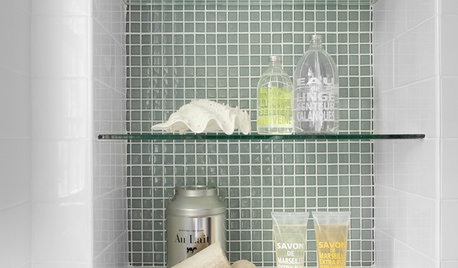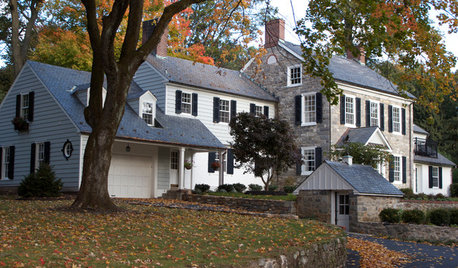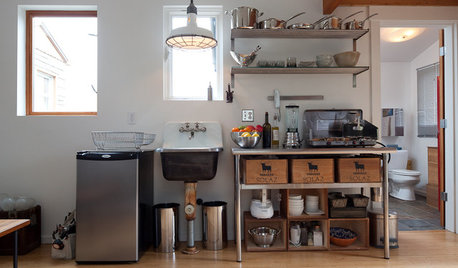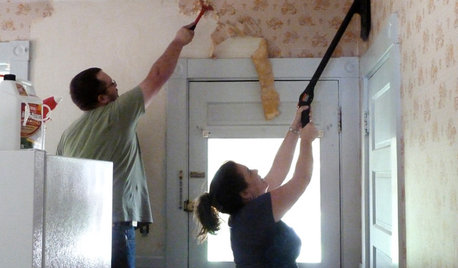can drywall stay wet a really long time?
talley_sue_nyc
16 years ago
Related Stories

DECORATING GUIDES15 Bite-Size Home Projects You Can Tackle in No Time
See how getting little decorating, cleaning and organizing tasks done can add up to a big sense of accomplishment
Full Story
BATHROOM DESIGNRecess Time: Boost Your Bathroom Storage With a Niche
Carve out space behind the drywall to add shelves or cabinets, giving you more room for bathroom essentials and extras
Full Story
LANDSCAPE DESIGNGarden Overhaul: Which Plants Should Stay, Which Should Go?
Learning how to inventory your plants is the first step in dealing with an overgrown landscape
Full Story
MOST POPULARIs Open-Plan Living a Fad, or Here to Stay?
Architects, designers and Houzzers around the world have their say on this trend and predict how our homes might evolve
Full Story
HOUSEKEEPINGIt’s Time to Clean Your Gutters — Here’s How
Follow these steps to care for your gutters so they can continue to protect your house
Full Story
REMODELING GUIDESShould You Stay or Should You Go for a Remodel? 10 Points to Ponder
Consider these renovation realities to help you decide whether to budget for temporary housing
Full Story
GARDENING GUIDES10 Tips to Start a Garden — Can-Do Ideas for Beginners
Green up your landscape even if you're short on time, money and knowledge, with these manageable steps for first-time gardeners
Full Story
HOME TECHWatch It! New Cameras Let You Video Chat, Stay Secure and More
Wouldn't it be great to have a single camera for home security, checking pets, chatting online and making videos? Now you can
Full Story
HOUSEKEEPINGQuick Fix: How to Patch a Drywall Hole
Dents and dings disappear, leaving your walls looking brand new, with this fix that even a novice can do
Full Story
DECORATING GUIDESHow to Remove Wallpaper in 4 Steps
Learn the best way to remove wallpaper with only water (and elbow grease) so your next wall treatment will look great
Full StorySponsored
Columbus Area's Luxury Design Build Firm | 17x Best of Houzz Winner!






sierraeast
talley_sue_nycOriginal Author
Related Discussions
I am really going to stay off the auction...really
Q
How long can Laptop stay 'On' ?
Q
can drywall stay wet for a long time?
Q
Myosotis sylvatica germinated but how long can they stay indoors?
Q
sierraeast
talley_sue_nycOriginal Author
webhomework.net
sierraeast
talley_sue_nycOriginal Author
sierraeast
mightyanvil
talley_sue_nycOriginal Author
sierraeast
User
talley_sue_nycOriginal Author
annzgw
talley_sue_nycOriginal Author
talley_sue_nycOriginal Author
hendricus
talley_sue_nycOriginal Author
hendricus
brody_miasmom
decker173
talley_sue_nycOriginal Author
decker173
ctbosox
decker173
talley_sue_nycOriginal Author
talley_sue_nycOriginal Author
annzgw
talley_sue_nycOriginal Author
annzgw
talley_sue_nycOriginal Author